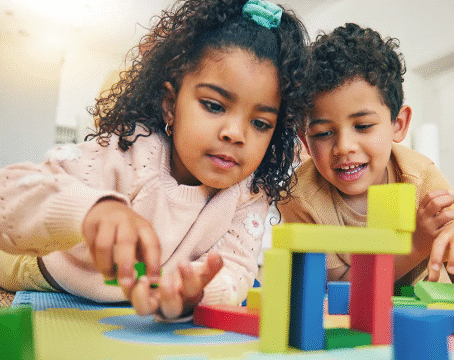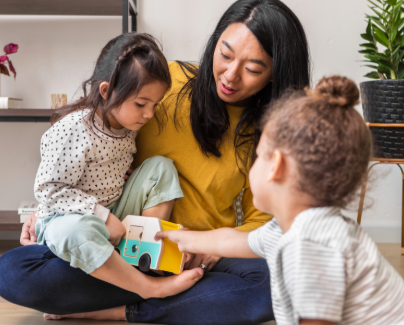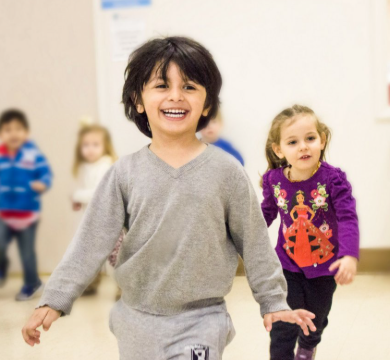Helping children understand the importance of exercise can be a joyful journey when it is connected to fun. For many kids, the idea of exercise may sound like a chore if it is presented in a rigid way, but when parents, caregivers, and teachers frame movement as play, discovery, and adventure, children are more likely to embrace it. Teaching kids about exercise and fun not only builds healthy habits but also encourages them to see activity as something they look forward to each day.
Children are naturally full of energy and curiosity. They love to run, jump, climb, and explore. Instead of separating exercise from their everyday play, adults can show them that moving their bodies is already part of what they enjoy. When a game of tag becomes a running challenge, or a backyard obstacle course sparks laughter, kids learn that exercise is not only about health but also about joy. The key is to make activities exciting rather than focusing on rules or performance.
Introducing exercise as a story or adventure can capture children’s imaginations. Pretending to be explorers crossing rivers, superheroes jumping over obstacles, or animals stretching and leaping helps children connect movement with creativity. These playful approaches make exercise less about repetition and more about imagination. When kids view exercise as an adventure, they look forward to participating and often come up with their own creative twists on activities.
Parents play an important role as role models. Children notice when adults enjoy walking, dancing, or playing sports. When parents laugh and move with enthusiasm, children are more likely to join in. Exercising together as a family, whether it is a weekend hike, a dance session in the living room, or a bike ride around the neighborhood, shows children that being active is something everyone can enjoy. These shared experiences also strengthen family bonds, turning exercise into a way of connecting as well as staying healthy.
Building exercise into daily routines helps children see it as a normal part of life. For younger kids, short bursts of activity can be more effective than long sessions. A quick game before dinner, a stretch before bedtime, or a playful dance after homework keeps movement consistent without overwhelming them. As children grow older, they may enjoy more structured activities such as swimming, martial arts, or team sports. Encouraging them to try different activities allows them to discover what they love most.
It is important to highlight the fun side of exercise rather than focusing only on health benefits. While children may not be motivated by the idea of building strong muscles or improving endurance, they can easily relate to how good it feels to play, laugh, and move freely. Parents can talk about how running makes the heart beat faster, how stretching feels calming, or how dancing brings smiles. These simple explanations help kids understand the connection between movement and feeling good.
Celebrating small achievements adds motivation. When a child learns a new jump rope trick, completes a short run, or creates a new dance move, acknowledging their effort encourages them to keep going. The celebration does not need to be a big event; kind words, clapping, or joining in the excitement is often enough to make children proud of their accomplishments. Positive reinforcement creates a cycle where children associate exercise with confidence and happiness.
Encouraging variety keeps exercise exciting. Doing the same activity every day can sometimes make kids lose interest, but mixing things up introduces new skills and challenges. One day could involve a family soccer game, while another could be a scavenger hunt at the park. Indoor days might include yoga stretches or a dance-along video. This variety shows children that exercise can fit into many situations and that there is always a fun way to move, no matter the weather or setting.
Social connections can also make exercise more enjoyable for kids. Playing games with friends, joining a sports team, or participating in group activities helps children stay motivated and engaged. They learn teamwork, communication, and sportsmanship while also staying active. Parents can support this by arranging playdates that involve outdoor games or by encouraging their children to join community programs. Friendships formed through active play often make children even more eager to participate.
Teaching children about rest is equally important when introducing exercise. Kids need to know that balance matters, and that recovery gives their bodies the chance to grow stronger. Explaining that muscles need time to recharge after a fun day of play helps children understand the role of both activity and rest. This understanding prevents them from feeling pressured and ensures that exercise always remains enjoyable rather than exhausting.
Technology can also be used positively when teaching kids about exercise. While too much screen time can reduce activity, interactive games that involve movement, such as dance or fitness video games, can make exercise appealing. Parents can set limits while still allowing technology to inspire kids to move in playful ways. Blending traditional outdoor play with technology-based activities provides a balance that children can relate to in the digital age.
One of the best ways to teach children about exercise and fun is to involve them in planning activities. Asking kids what games they want to play or what adventure they want to create gives them ownership. When children feel included in the decision-making, they are more excited to participate. This not only increases motivation but also helps them develop leadership and creativity.
Over time, children who experience exercise as fun build positive lifelong habits. They begin to see activity as a source of relaxation, enjoyment, and energy rather than a task to complete. As they grow older, these habits can help them manage stress, build resilience, and maintain a healthy lifestyle. Teaching them early that exercise is both beneficial and enjoyable sets the foundation for a balanced relationship with movement.
Ultimately, the goal is to inspire children to move in ways that bring them happiness. Every child is unique, and what feels fun to one may not appeal to another. Some may love the thrill of running and competing, while others may prefer dancing, climbing, or swimming. By respecting their interests and supporting their choices, parents help children find the joy in exercise.
Teaching kids about exercise and fun is not about strict routines or perfect performance. It is about nurturing a love for movement, showing them the many ways their bodies can move, and helping them discover the excitement that comes with being active. With patience, encouragement, and creativity, adults can guide children toward seeing exercise not as a duty but as a celebration of what their bodies can do. When kids grow up associating activity with play, laughter, and connection, they are more likely to carry these positive feelings into adulthood, creating a healthy and happy relationship with exercise for life.






